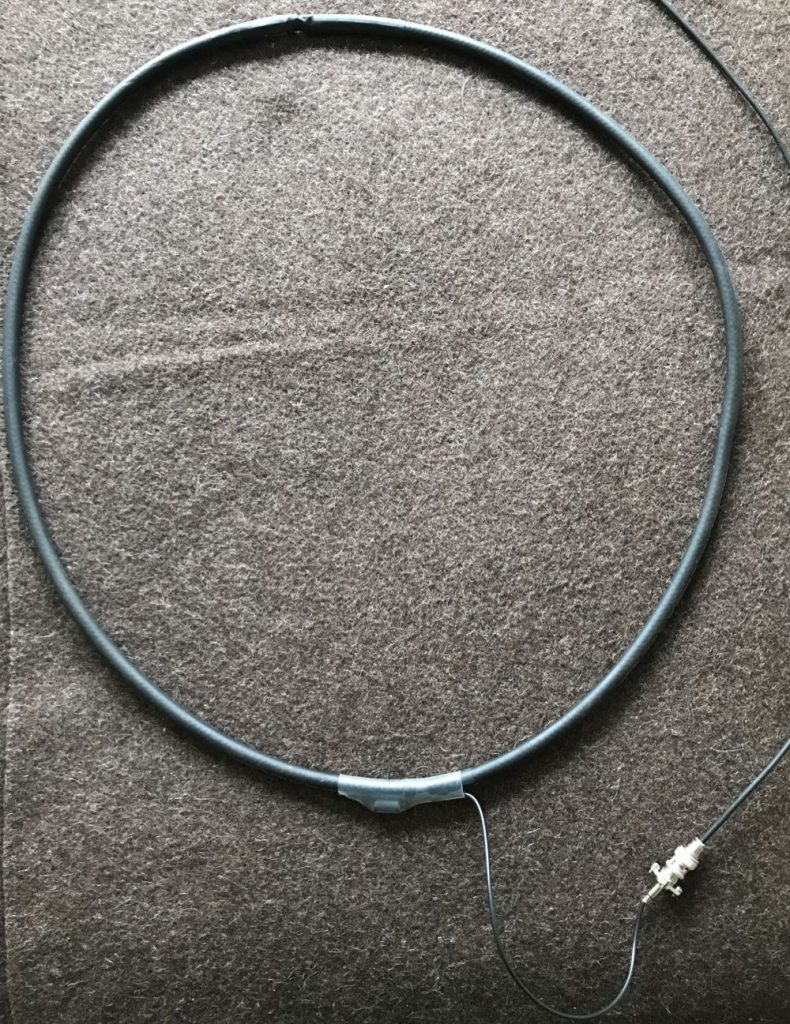
Last week, we packed the car and headed to coast of South Carolina.
The trip was a bit impromptu but through the creative use of hotel points, we scored a two bedroom ocean front unit with a fantastic little balcony.
The vacation gave me an excuse to test the new passive loop antenna my buddy Vlado (N3CZ) helped me build recently.
The loop design came from AirSpy’s engineer and president, Youssef Touil.

This passive mag loop takes advantage of the new AirSpy HF+ Discovery‘s exceptionally high dynamic range. Youssef had reported impressive results, so I had to build one.
Vlado had a length of Wireman Flexi 4XL that was ideal for this project. The only tricky part was penetrating the shielding and dielectric core at the bottom of the loop, then tapping into both sides of the center conductor for the balun connections. Being Vlado, he used several lengths of heat shrink tubing to make a nice, clean and snag-free design.

The results were truly exceptional. I spent most of my time on mediumwave from the hotel balcony because I was determined to catch a transatlantic signal.
Check out the spectrum display from my Microsoft Surface Go tablet:

Our ocean front hotel was inundated with noise, but I still managed to null out most of it and maximize reception using the passive loop. I simply suspended the loop on the balcony rocking chair–not ideal, but effective and low-profile.

Want to take a test drive?
If you’d like to experience this portable SDR setup, why not tune through one of the spectrum recordings I made?
Click here to download the spectrum file [1.7GB .wav].
The recording was made on November 17, 2019 starting around 01:55 UTC–I chose it at random and have yet to listen to it myself. You’ll need to open this file in AirSpy’s application SDR# or a third party SDR app that can read AirSpy .wav files.
Stay tuned…
I’m writing an in-depth report of the HF+ Discovery, my experiments with this setup and AirSpy’s soon-to-be-released passive loop antenna for the January 2020 issue The Spectrum Monitor magazine. Spoiler alert: I am truly impressed with the wee little AirSpy HF+ Discovery. It’s a powerhouse!
Do you enjoy the SWLing Post?
Please consider supporting us via Patreon or our Coffee Fund!
Your support makes articles like this one possible. Thank you!














